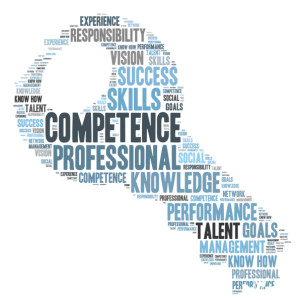Not long ago, finding the right talent was about proximity. The common practice was to source from a pool within a certain mile radius of the office. It was seen as necessary for teams to do their work at a desk no more than a stone’s throw from their managers.
The recent push for remote work and subsequent advancements in technology changed all that. With videoconferencing and instant messaging now the norm, it’s not unusual to find a leader managing a team spread across many time zones — if not managing a fully global workforce.
This is no small undertaking. A one-size-fits-all approach won’t work and can lead to serious issues with communication, coordination, collaboration and more. But challenges present opportunities for growth, resilience and innovation. To be successful in managing a global workforce and leveraging the future of remote working, it’s a matter of changing your perspective around certain aspects of your operations.
Rethinking Remote Work Communication Best Practices
Depending on the makeup of the team, managers must navigate differences in not just time zones but also customs and cultures. Inclusivity will be key to adapting the company culture to be more welcoming to team members from different locations. This inclusivity should also be applied to communication, as it will help employees feel like they belong and can contribute to important discussions.
Take something like delegating, for example. Remote work communication best practices would tell you to keep your messaging as clear and concise as possible. Though commonplace in the US, such a direct approach may come off as cold, terse or even rude to employees in other countries. Paying attention to tone is critical, as can being aware of how things will be interpreted based on a person’s culture.
Reevaluating Remote Performance Evaluation
Today, work is much more focused on results rather than the time someone clocks in and out. Just being in the office or online is not sufficient. Participation in meetings, creativity, collaboration and other forms of purposeful engagement speak louder than not taking sick time or working during holidays. Maintaining open communication, establishing precise deliverables and investing in a system for clear reporting will help managers keep track of remote work productivity, performance and the like.
However, these tactics are just the foundation for effectively managing a global workforce. Shorter, frequent check-ins, for instance, can prove more valuable and create stronger connections than quarterly or annual reviews, especially for dispersed teammates. When remote employees feel seen and understood, it can do wonders for improving remote work productivity and performance.
Automattic, the company behind WordPress, emphasizes reevaluating remote performance by focusing on output over hours. It uses blogs, tracking tools and chat programs to communicate and monitor progress, fostering a culture that prioritizes productivity and creativity among its global workforce.
PREMIUM CONTENT: Temporary Staffing platform Update: 2024
Reimagining the Future of Remote Work Culture
While remote work often provides greater flexibility, it can also exacerbate burnout. Those collaborating across different time zones can unintentionally work longer hours and find it more difficult to admit or even recognize that they’re overdoing it. And despite the notion that people are more connected, the lack of in-person experiences (coffee breaks, office banter, etc.) means workers have far fewer human interactions. Given enough time, stress can build up.
Encouraging people to physically leave work, even though their office might be their dining room, can help. But it will take a concerted effort from leadership to ensure this happens and that employees are finding the right work-life balance when both work and life are under the same roof. People who take lunch breaks, go for walks during the workday and maintain a personal life separate from work end up being more productive in the long run.
Redefining Global Workforce Management
Managing a global workforce entails more than merely assigning and overseeing tasks. To do it successfully, you’ll need to place greater value on empathy, inclusivity and collaboration. A third-party partner can also help navigate cultural, logistical and legal differences when managing a global workforce. Striking a balance between these factors can help you overcome the challenges of hiring international workers and put your business in a much better position to respond to the ever-changing remote worker trends.









